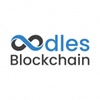In the ever-evolving landscape of blockchain technology, the imperative of interoperability and fluid asset transfers across varied blockchains has taken center stage. Gaining substantial momentum with the help of a cryptocurrency development company, the concept of wrapped tokens stands as a solution to bridge the gap between disparate blockchain ecosystems.
These tokens, which are sometimes denoted by the prefix "w," take the form of digital tokens that imitate the value of an underlying asset found in another blockchain but are backed by one blockchain. In essence, they serve as conduits that span across dissimilar blockchain platforms. They enable assets to be transmitted and harnessed across networks that might otherwise remain disjointed.
The genesis of these tokens usually involves a custodial protocol, wherein the original assets are confined within a secure vault.The target blockchain then issues corresponding tokens. These coins have functions in smart contracts, trade, and other areas. Additionally, they never waver in their commitment to the native asset's worth.
Essentials Mechanics
The development of wrapped tokens involves a sequence of pivotal steps:
Locking Original Assets
Custodians immobilize the native assets (e.g., Ether on Ethereum) within a smart contract on the source blockchain.
Generation
Via a smart contract, analogous wrapped tokens (e.g., wETH) are forged on the target blockchain. These tokens are intrinsically representative of the value stored within the immobilized original assets.
Bidirectional Parity
Because wrapped tokens are interchangeable, users can freely transfer native assets into wrapped tokens and vice versa. The term "bidirectional peg" is frequently used to describe this feature.
Custodial Oversight
Custodians take on the responsibility of protecting and overseeing the locked original assets. Their vigilance ensures the unwavering integrity of the peg and sustains the equilibrium of value between the original assets and the wrapped tokens.
Advantages
Interoperability
Encouraging interoperability and increasing the adaptability of digital assets, wrapped tokens act as conduits for the smooth transfer of assets across diverse blockchains.
Access to Diverse Ecosystems
Users gain the capacity to leverage assets from one blockchain within the applications and domains of another, thereby enabling new opportunities for DeFi, gaming, and beyond.
Liquidity Pool
These tokens contribute to the liquidity pool of decentralized exchanges. They foster cross-chain trading pairs and augment the depth of the liquidity pool.
Risk Mitigation
Wrapped tokens extend a means to manage risk by allowing users to diversify their holdings across a spectrum of blockchains without necessitating direct exposure to each blockchain’s native assets.
Capitalizing on Arbitrage
Wrapped tokens can support arbitrage trading across diverse blockchain platforms, where disparities in asset prices may be discernible.
Wrapped Tokens in Action: Ethereum and Binance Smart Chain
A noteworthy exemplification of these tokens lies in the seamless bridge established between Ethereum and Binance Smart Chain (BSC). Blockchain developers wrap assets native to Ethereum, including Ether and ERC-20 tokens, and operationalize them within the BSC ecosystem. Users access DeFi and DApps on both platforms. Developers wrap BSC assets for Ethereum.
Challenges and Limitations
Custodial Vulnerabilities
The inclusion of custodians in the mechanism introduces attendant counterparty and custodial risks that users must take into account.
Centralization Apprehensions
Despite their role in bolstering interoperability, the custodial aspect of wrapped tokens may elicit concerns regarding centralization.
Conclusion
Wrapped tokens enable seamless transfer of assets across different blockchain platforms, expanding their potential use cases and enhancing liquidity. Although their adoption comes with challenges, their increasing popularity highlights the blockchain industry’s commitment to creating a connected digital economy where the value can flow freely across different blockchains.
Crypto developers facilitate the creation of wrapped tokens, which act as bridges between different blockchains, ensuring interoperability and seamless asset transfers across diverse cryptocurrency ecosystems.


No comments yet